It seems to me there are two very different approaches often taken in making photographs. The first is very ad hoc and opportunistic. You walk the streets of India (or wherever) and photograph whatever catches your eye. You wander and you photograph anything and everything that you can find at the intersection of your curiosity and great light. There’s nothing wrong with this approach; it has a long history in this craft. It’s probably the first approach we learn, and it’s necessary because it’s here where discovery happens. I wouldn’t trade this wandering approach for anything. Wonderfully, no one is asking us to.
Well, that’s not entirely true. There is a train of thought in popular photography that suggests that, based on our personalities, we are either hunters or gatherers. One or the other. The gatherer is the photographer I just described: the opportunistic “shoot what you see” photographer.
The hunter is something altogether different. This is the photographer who goes looking for a specific thing. This might be a theme or story. It might be an idea or a specific subject. Earlier this month, when I was on safari, that specific subject for me was cheetahs. After finding a cheetah family, we decided to follow that family—a mother and three cubs—for nine days. Photographically speaking, we were “hunting”.
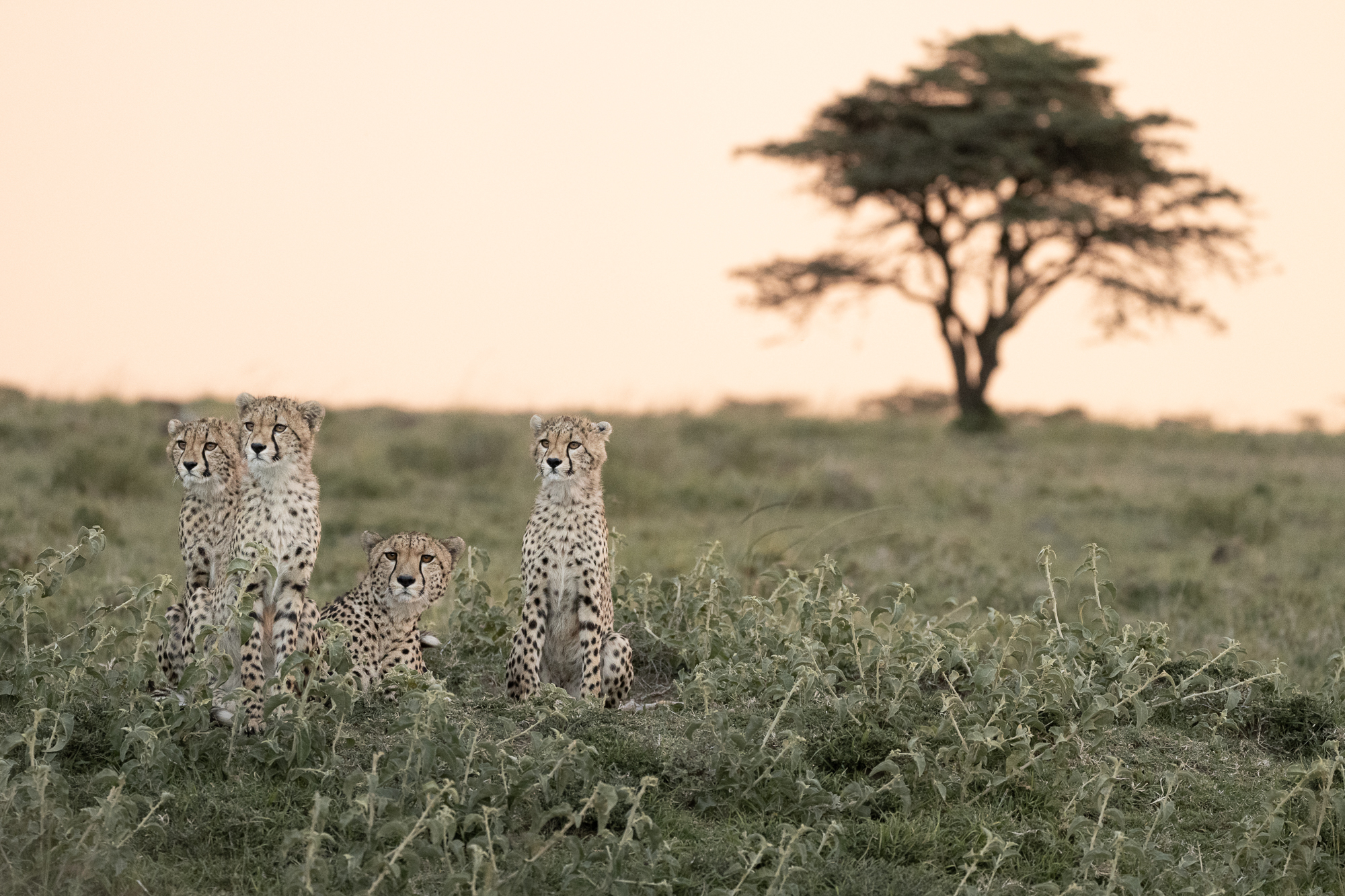
As an approach to photography, hunting is more focused. While gathering is broader, hunting is deeper. Both are necessary.
On safari, a gathering approach might see you wandering all day, photographing everything you happen upon, and you’d come home (I hope) with a body of work that’s very general in a “My Week on Safari” kind of way. A hunting approach would see you spending a lot of time with one subject or idea, resulting in a more specific series you might look at as “My Week With Cheetahs.”
I don’t like the idea that any of us are either a gatherer or hunter, but I do see a lot of value in both gathering and hunting (metaphorically speaking). As humans, I’m not sure why it’s so important to be something specific, like a hunter or a gatherer. Maybe we’re allergic to nuance. I believe if we avoid the labels, we can engage freely in both approaches, as they serve us.
I am not a hunter. I am not a gatherer. I’m a photographer who uses both approaches as they best serve my work.
So when I first arrive in a place to photograph, I’m in gathering mode. I’m creating a visual inventory of the place, seeing what’s available, seeing what interests me, and—usually—taking some time to discard my assumptions and expectations. Then, as I see what’s there and begin to make photographs, I get more focused and make more specific choices. I don’t gather or hunt; I gather then hunt. I find out what’s there, and I photograph whatever I like (shoot it all! gather ye rosebuds while ye may, etc.!), but at a certain point, I become less reactive and more proactive.
The hunting photographer who doesn’t first gather and take a broader initial approach might too quickly settle on something that isn’t there. If I arrived in Kenya and decided on day one to photograph white rhinos and really go deep with that, I’d have been later disappointed to find I’d wasted my time chasing a species that’s impossible to find in the area where I was working.
And, conversely, the gathering photographer who doesn’t eventually go deeper with a subject and decide to narrow their focus risks never knowing their subject well enough or spending enough time on it to get the kind of photographs they’re really hoping for.
Two examples suggest themselves from my recent Kenya trip. On our first couple of game drives, we just took it all in. I photographed whatever I wanted to and did my visual inventory: I gathered. And I continued to gather until we began to find the same cheetah family with some consistency and then decided to really go deep with them. Can you see the advantage of spending hours and hours with one subject? You get more chances. You get more moments. You get different light. You begin to anticipate behaviour. We spent over 30 hours with our cheetah family, and that kind of specific hunting approach paid off for us. But it started with gathering.
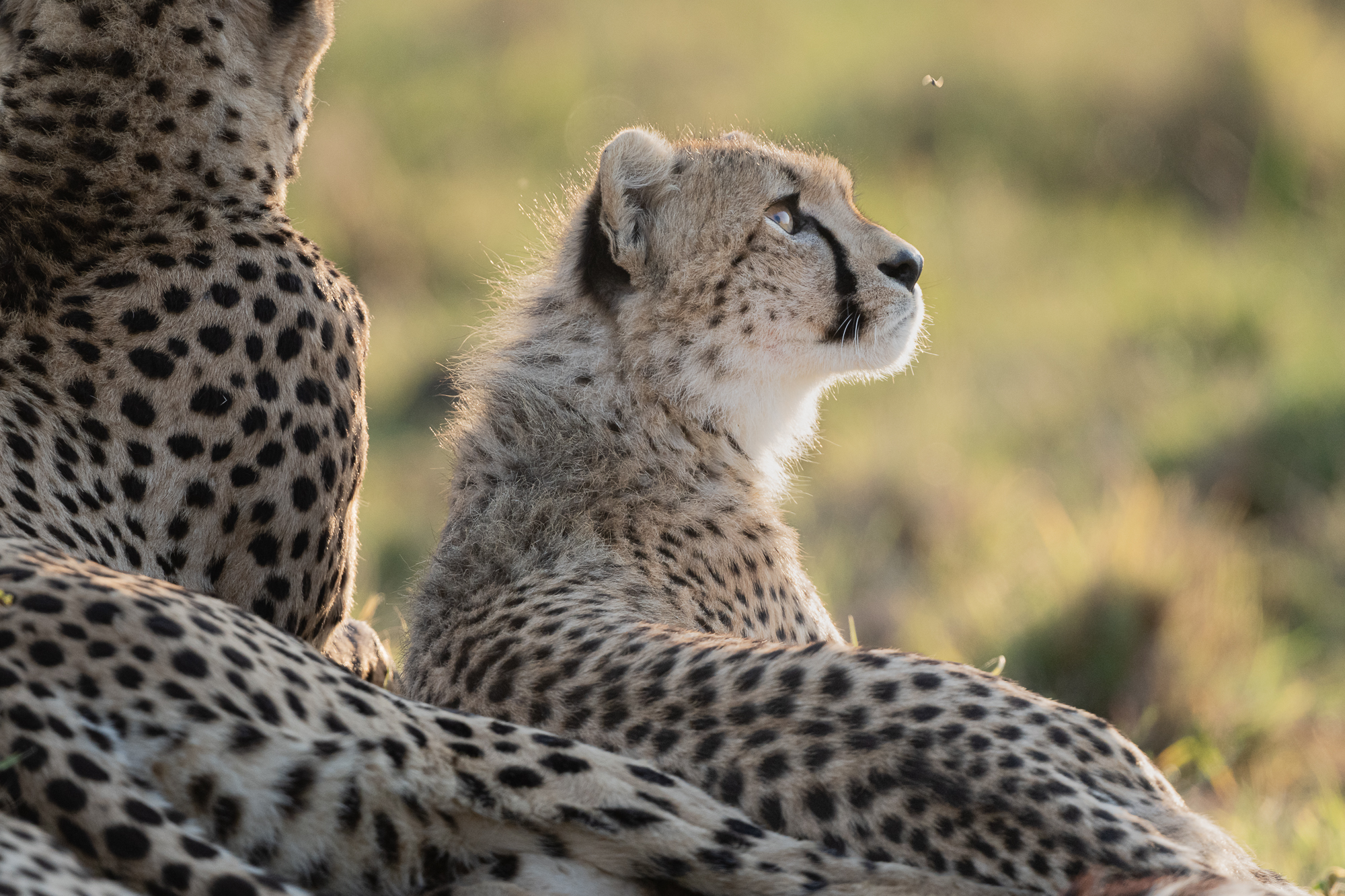
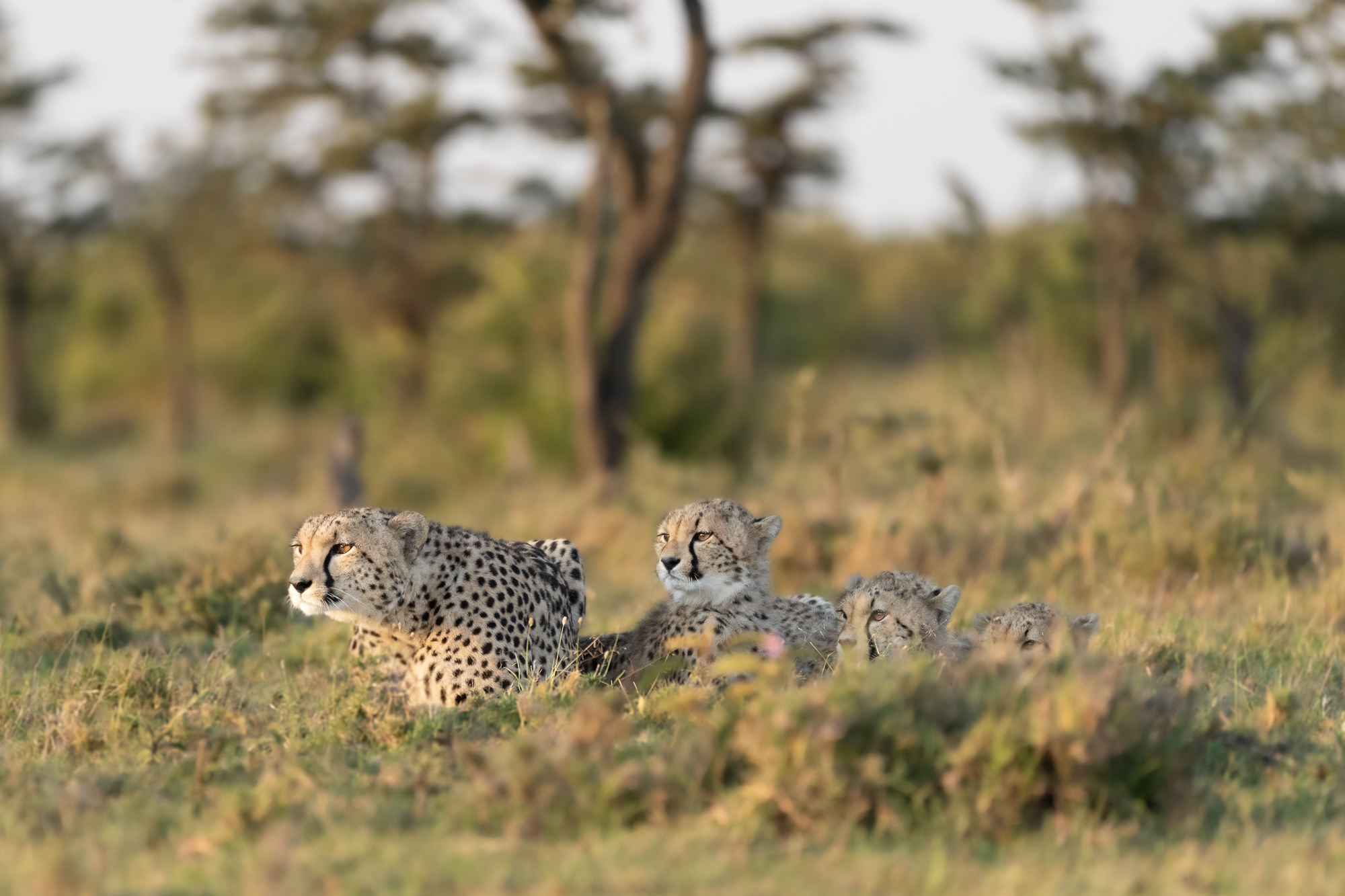
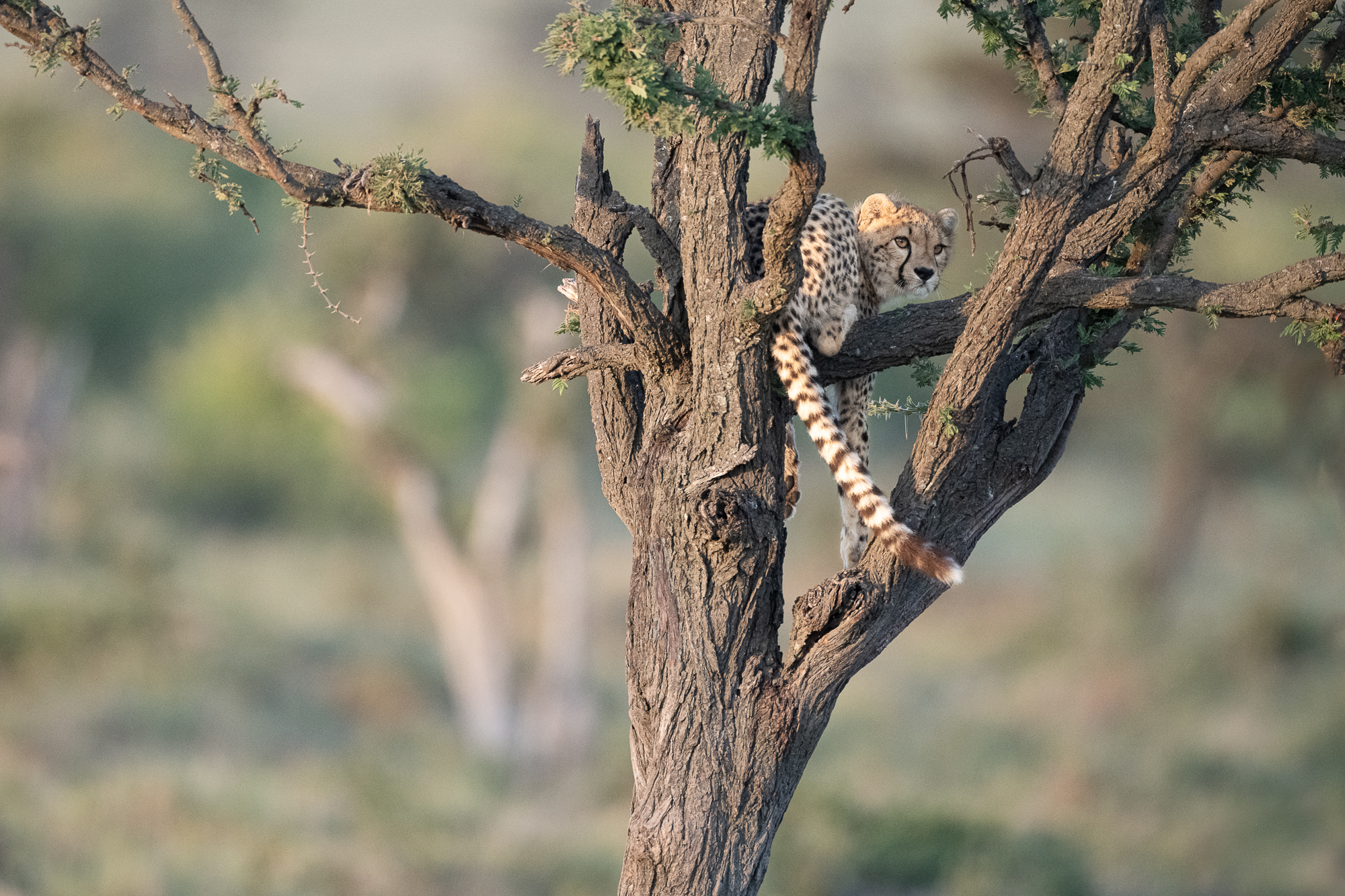
The second example: I spent time in helicopters on this trip (the images you see below are not drone photographs). At the start, I gathered (I also giggled because it turns out doors-off helicopter rides are just about the most fun I’ve ever had with a camera in my hand). I looked for what was there. I tried to understand the possibilities. I photographed everything I saw. Look! Giraffes! Shadows! Elephants! But as I worked, I discovered it was pattern I was most drawn to, and I started looking specifically (hunting) for that. I got focused. We circled two or three times over scenes rich in pattern and ignored much of the rest. I gathered, and then I hunted. Knowing I was looking for patterns made it easier to recognize them when they came.
I went broad to understand what was possible and then went deep to make the most of those possibilities.
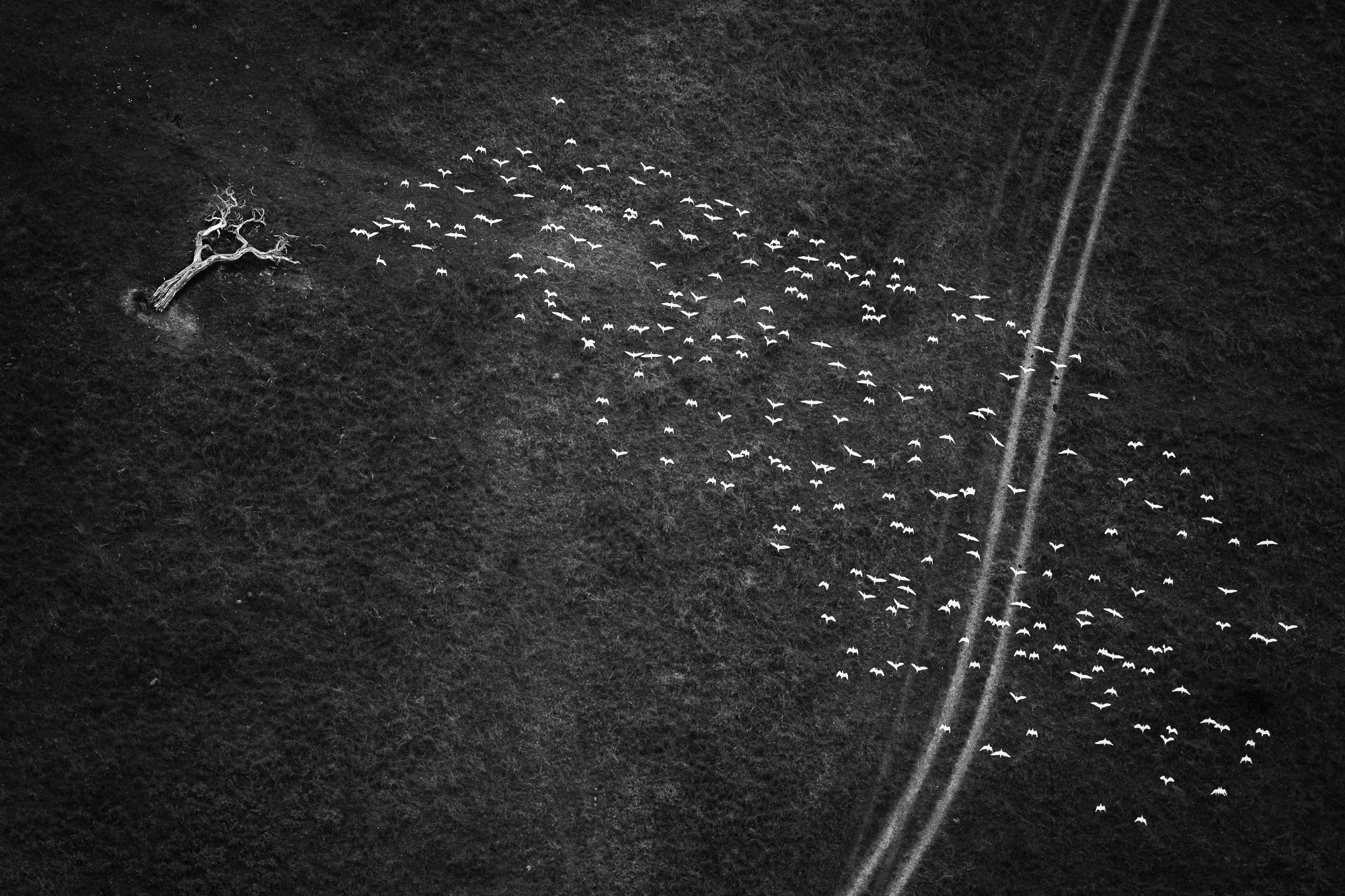
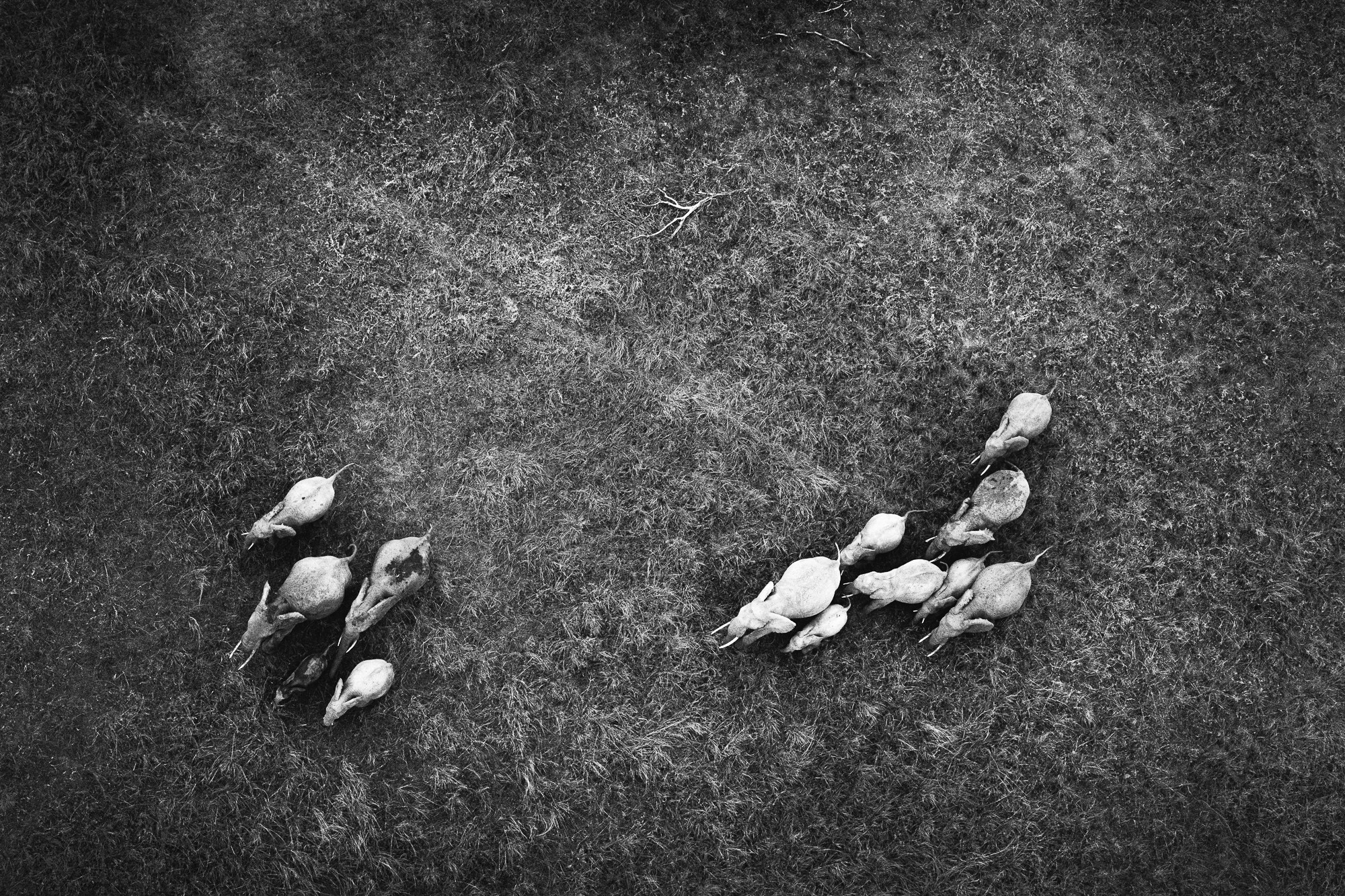
It’s not whether you hunt or gather. It’s whether you’re willing to gather and then hunt.
And in some cases, it’s whether your eyes are open wide enough to gather while you hunt. My desire to look for and photograph cheetahs every single day didn’t stop me from photographing unexpected moments. At one point, we were getting skunked looking for the cheetah family we’d already spent so much time with—hadn’t seen them all morning. But in the search, a beautiful elephant made herself known, playing coy behind a bush very close to our vehicle. Raising my long lens, I made a few dozen frames of her face, nicely obscured by the bokeh created by nearby out-of-focus leaves. It’s one of my favourite images of the trip.
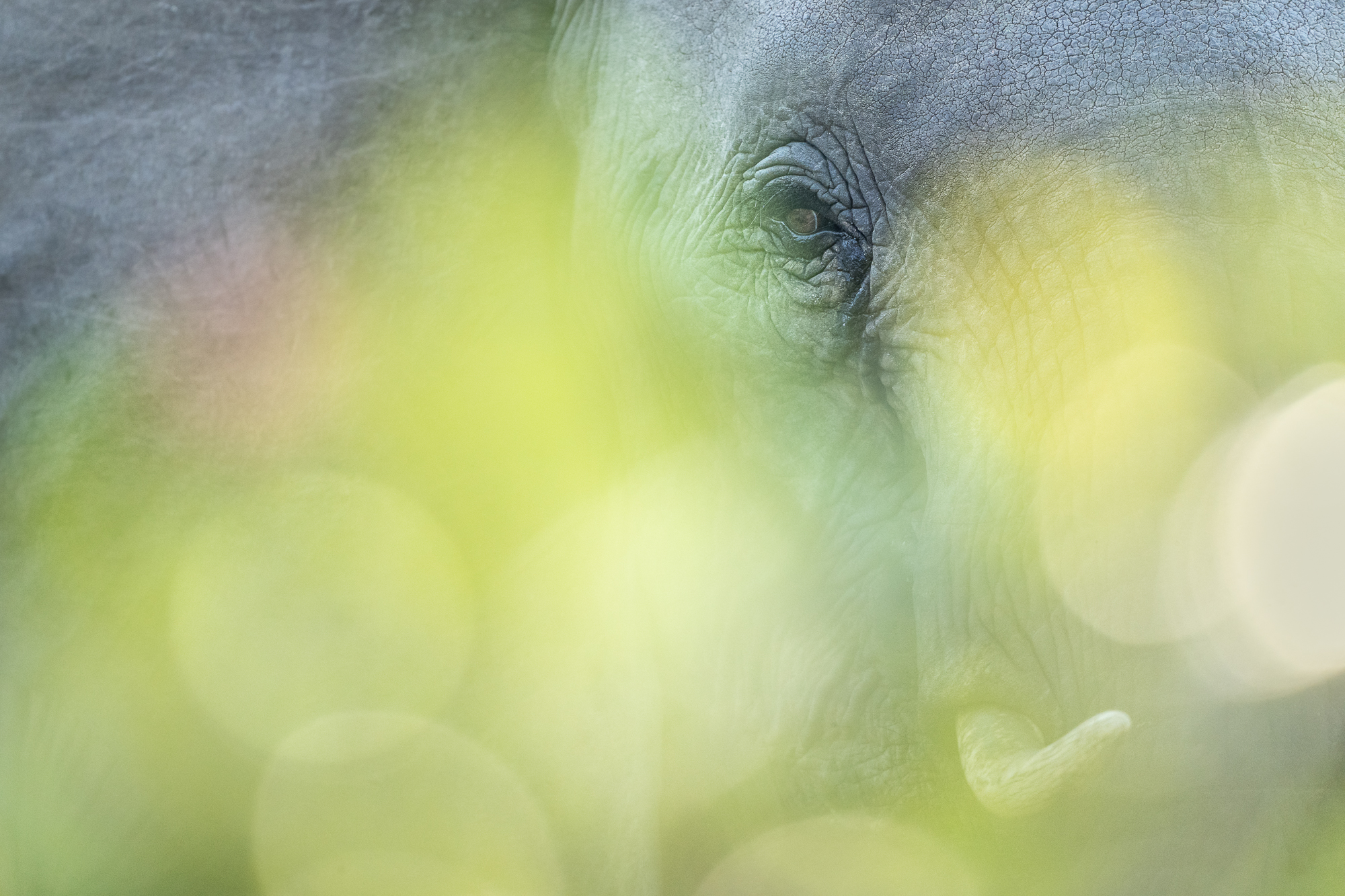
As a deeper, more focused approach, hunting need not blind us to other opportunities. In fact (though I can’t say why), it seems to open me more to those other chances when they happen. Maybe it’s because I’m not looking so hard and I’m more receptive—I don’t know. But I do know I can’t seem to choose one or the other.
To hunt or gather is not a personality thing; it’s a matter of choosing to approach your craft with both breadth and depth and to do so as it best works for you. Just don’t get sucked into doing the one and neglecting the other.
Thoughts? I’d love to hear from you in the comments below.
For the Love of the Photograph,
David.
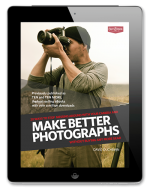
PS – Want more like this? I send these articles out every two weeks to photographers around the world who want to improve their craft and explore their creativity and I’d love to include you. Tell me where to send it and I’ll send you a copy of my best-selling eBook Make Better Photographs, as well bi-weekly articles, first-glimpse monographs of my new work, and very occasional news of resources to help you keep moving forward in this craft we love.
“Each and every one of your emails inspire and motivate me to want to jump right out of my chair away from my computer and shoot for the love of it . Thank you David.” – Millie Brown

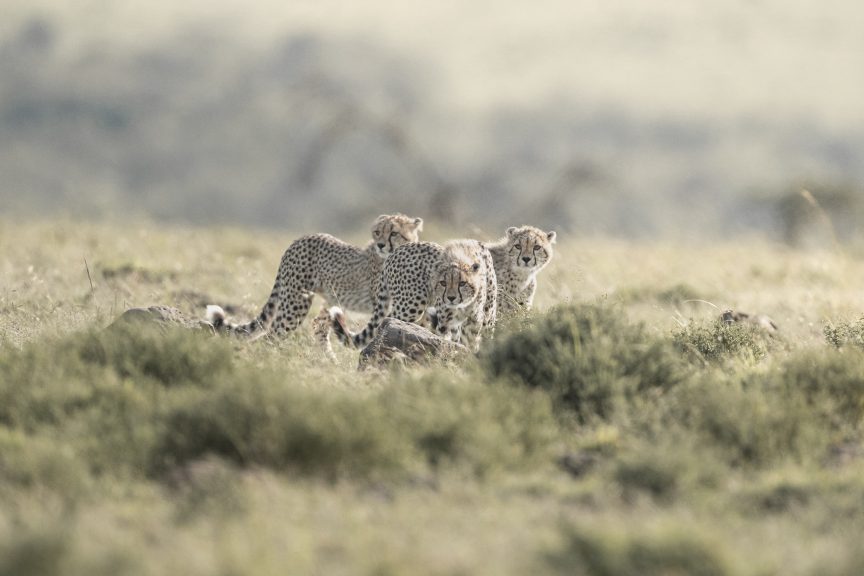
Comments
That elephant eye is haunting…beautiful.
Thank you for that, Adair.
Hi David! My husband has been buying me your books for years, but we recently discovered your podcast together and we both love your insight into living a creative life. I belong to a online photography group called 52Frames and we have talked about the idea of being a hunter or a farmer (rather than your gatherer) over and over again. In our weekly challenges, I can often tell who the farmers are by their elaborate set-ups for their shots. Many are generous with their behind the scenes tips and tricks. I have always been a hunter, but your article made me see the value both hunting and gathering play in the creative process.
No pressure whatsoever, but if you are interested, here is a blog post I wrote a while back about our group and team hunter vs team farmer. http://www.theoodlearium.com/2020/11/are-you-a-hunter-or-a-farmer/.
Thank you so much for all that you share with this community.
Jen
Hi David!
Just wanted to say the elephant peering through the dancing leaf bokeh is such an exceptional image – unique, surprising, and beautiful with an intimate charm. I really enjoyed this moment, and your article. Thanks.
Like always you show us a really profound approach to a personal way of photography.
I like this combination of pure psychotherapy and Art 👍😊 and thank you so much for sharing it with us, David. Warm greetings from over the ocean! Rike
Your words are always relevant but the idea of dropping labels, dipping into nuance, being the hunter *and* the gatherer (or whatever the case/label may be in a broader context) really resonates with me. I appreciate the thoughtful way you’ve explored this. Life is rarely either/or.
(also, your photographs, as ever, are stunning)
Thank you, Michelle! Much appreciated. Makes me very happy to know you find something valuable here that resonates! 🙏
Thought provoking as always, David.
Living in South Africa we are surrounded by plenty of opportunities, both at home and when travelling. When on the move, even in our wonderful game parks, the tendency is to grab a photograph or two and move on. Some of this results from having a partner who would regard hours spent at a hide waiting for something to happen as crazy and some from the hope that something really exciting will be round the next corner.
I find this is true also of travelling abroad, say in Europe or the US – there is so much to see and not much time that the tendency is to grab the shot.
At home on the other hand familiarity with places, weather and light allows me to “hunt” the shot and to visualise what I’d like to achieve. In many cases the pre-conception is very different from the result but one can always try again tomorrow.
Thank you for another great article.
Peter – This comment: “some from the hope that something really exciting will be round the next corner” – spot on. But it’s not just our partners. I think we all have a tendency to live in the “what if?” – what if there’s something better elsewhere? I’m learning, and re-learning how to settle in and wait. Not easy for those of us who learned the “don’t just sit there, DO something!” mentality. LOL. I am doing something, I’m waiting! 🙂
Morning David 🙂
Thank you so much for this, and all your other articles, they are mind opening and mind blowing.
I really love your images as well. The cheetah cub watching the bug was my favourite of the Cheetah series and the birds in the helicopter series. Both wonderful.
Thank you, Shane. The encouragement is welcome! The overhead shot of the birds and the tree us one of my favourite images from the last year or two. Can’t wait to be back in a helicopter in 5 months!
I love, love, love your blog! Is there any possibility. To join you on a photography trip?
Thank you, Ida! 🙏 Right now I have no trips planned. Once travel becomes less painful and frustrating, I’ll start making plans. If a spot opens on one of my workshops I would post that here on the blog and my Contact Sheet subscribers would be the first to know.
I love hearing from you. Thank you for all your insights into photography. I love all of your work. Thank you so much!! Debbie Sladen
You just made my day, Debbie. Thank you! 🙏
Hi David,
I always enjoy your musings on our favorite subject. Loved this one. Thank you.
Me, I’m both H&G, always have been. When I’m in some new place I gather, then later, offI go hunting, following some impulse. Doing both is productive for me. And it doesn’t have to be in Africa, just as well could be Providence, RI
Jan
Thank you, Jan. You’re right, doesn’t have to be Africa. It’s an approach to seeing that I think applies anywhere we use our cameras. Go broad, explore, see what’s there, then go deeper and find greater focus. One OR the others seems incomplete to me.
Thank you for sharing your reflections on hunters and gatherers – it reminded me of a podcast I had heard with Arthur C. Brooks. In this article, he describes the idea of “objectifying oneself” (https://arthurbrooks.com/article/you-are-not-your-work/)
I think that the article may answer why people look for “one stereotype” instead of seeing how both complement one another.
Your description helped me see how I’m acting now and how my idea actually makes sense: I tend to wander around and make pictures as I can (gather) to get a sense of the place and thus of what it is I could want to do there.
Thank you for that link, Francoise. I’m off to read it now! Thank you for reading. 🙂
As I was reading this, I was realizing when I have done each of the gatherer and the hunter. I especially like the approach of beginning in the gatherer mode and then honing in for the hunt. I’ll be taking this gem of wisdom with me.
I plan to be much more aware of when I’m gathering and when I’m hunting. Although I’ve done both in the past (without realizing it) I can see where it will be much more beneficial to be aware of which mode I’m in so I become a better hunter, after the initial gathering. Thank you, as always.
What a perfect description of the photographic seeking process. I love that you have not defined these options as either/or. I can see myself as both hunter and gatherer exactly as you’ve described. Perhaps it is the hunter in us that permits us to build projects and collections and make photo books. The gatherer may start the process but the hunter often fills in the gaps and deepens the work into something meaningful, more than a collection. You have a beautiful way of clarifying the process and making me feel like an artist, even when my pictures are from my own little corner of the world. Thank you!
I love this thought process especially as it invokes Africa. I envy you being back there !
Looking forward to seeing more photos. Cynthia was kind enough to answer a question I had for you Re your change from Fuji
Take care
Thank you, Jo. Reach out if you have further questions. I’m always happy to talk gear when there’s a point to it. My recent switch has raised a lot of questions for some and I’m happy to answer them 🙂